Columns
How India Lost Afghanistan
Jaideep A Prabhu
Dec 08, 2014, 10:30 AM | Updated Feb 24, 2016, 04:20 PM IST
Save & read from anywhere!
Bookmark stories for easy access on any device or the Swarajya app.
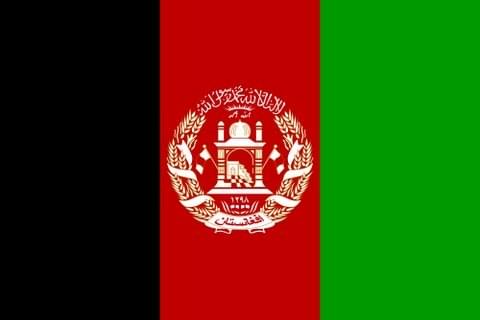
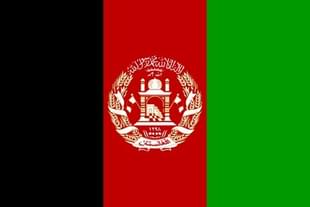
The Indian government squandered Afghanistan’s goodwill through years of vacillating and incoherent policy towards the country. This failure will have repercussions in the entire region.
There used to be a time, not long ago, when Afghanistan could not get enough of India. Just in 2013, in addition to the usual delegations on business, health, security, and other sectors, then Afghan president Hamid Karzai paid three visits to India. Then suddenly, a coolness developed in India-Afghanistan relations when Ashraf Ghani Ahmadzai took over as President after the Afghan elections of April 2014. Just like that, the hot romance cooled down to casual acquaintance.
However, things were hardly that sudden. In fact, the Indian government squandered Afghanistan’s goodwill through years of vacillating and incoherent policy towards the country. Where decisions were taken, they went unhonoured as many times as not, and Delhi almost appeared disinterested in the future of the central Asian state. Most critically, India repeatedly deflected requests to play a greater role in the security of the nascent Afghan democracy.
India’s historical ties to Afghanistan are well known; every Indian and Afghan leader likes to reflect upon them in front of the camera and analysts usually make at least a cursory reference to them. Yet India’s crisis in the mountainous country has little to do with either Mauryan conquests or Mughal control of the country. More importantly, the policy paralysis India has exhibited in Afghanistan is symptomatic of deeper flaws in the Indian foreign policy apparatus that will have repercussions not just in the country but in the entire region.
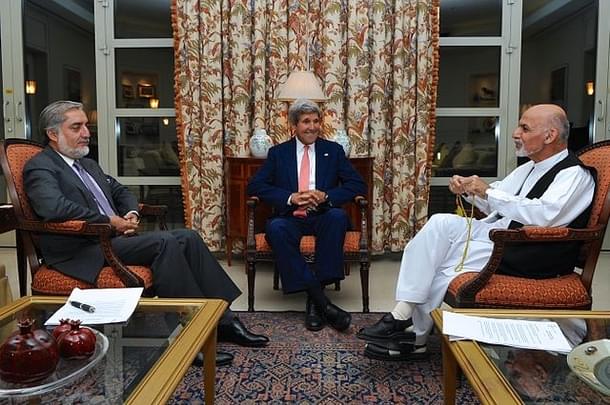
In October 2001, less than a month after the September 11 attacks, the United States and its allies launched the invasion of Afghanistan under Operation Enduring Freedom. The United States was quick to ask India to contribute towards its Global War on Terror. India showed a willingness to cooperate in terms of intelligence and logistics but firmly refused to play a military role in Afghanistan. Washington appealed to Delhi several times during the tenure of India-friendly president George W. Bush—even for Indian boots on the ground since 2006, but Raisina Hill did not budge. Perhaps some felt that the United States owed India for creating a grand mess in the region in the 1980s in the first place.
Riding on the coattails of US military power comes easy to the world, especially when things are going well. However, by 2009, Americans were growing tired of a war on the other side of the planet that supposedly degraded terrorist networks but did not yield any visible prize. In May 2011, Osama bin Laden was found and killed in Pakistan, barely a stone’s throw away from a military facility of an American ally. Domestic public pressure to leave became stronger now that the mission seemed truly accomplished—the Afghan government had been established in 2004 and it was their responsibility to safeguard their own wellbeing.
Strategists warned, however, that the Taliban was not yet dead and would come back the moment NATO left Afghanistan; the Afghan National Security Force was as yet too weak to resist the Taliban on its own. The United States was desperate for allies in the region to hold on to the gains they had made. Already, as US plans to retreat became more pronounced, the Taliban began a small surge against local and foreign forces.
India’s reticence to become involved in Afghanistan’s security has come at a high price. Even as talk of downsizing the American commitment to Afghanistan appeared in the US presidential election campaign in May 2008, the Indian embassy in Kabul was the target of a terrorist attack that left 58 people dead and 141 wounded; it was targeted again in October 2009, killing at least 17 more. In February 2010, terrorists levelled the Arya Guest House, killing nine Indian doctors. In August 2013, the Indian consulate in Jalalabad suffered a suicide bomb attack with 10 casualties, and the Indian consulate in Herat was attacked in May 2014, thankfully with no injuries. Indians have also been victims of kidnappings and executions in the central Asian version of the Wild, Wild West.
Many of these attacks have been traced back to Pakistan and its notorious intelligence service, the ISI. The US retreat had not only encouraged the Taliban to launch their own Spring Offensive but also emboldened their patrons in Islamabad to try and dislodge Delhi’s foothold in their backyard. In fact, Ashfaq Kayani, Pakistan’s Chief of Army Staff from 2007 to 2013, had publicly called for minimizing India’s role in Afghanistan in exchange for stability in Afghanistan.
India’s inaction in the face of these provocations is curious. On the diplomatic front too, Delhi’s actions can at best be described as tepid except when it has come time to criticize the United States. However, India has helped neither itself nor the region with any proposal of its own. For example, from Delhi’s perspective, Iran holds the key to Afghanistan’s reintegration into South Asia. Yet India has done little to persuade the United States to make an exception to its sanctions on Iran so that India could continue the highway from Delaram to Zaranj through Milak to Chabahar. This route would not only open Afghanistan up to trade but also the rest of Central Asia.
At the same time, Chinese companies trade routinely with Iran in arms, auto parts, electronics, mining, oil, power generation, textiles, toys, transportation, and more. China’s trade with Iran has increased dramatically since 2007 when it replaced the European Union as Iran’s largest trading partner, and is set to hit $44 billion this year. India has largely complied with the spirit of the US sanctions by reducing its oil dependency on Iran and disconnecting its financial links with the country.
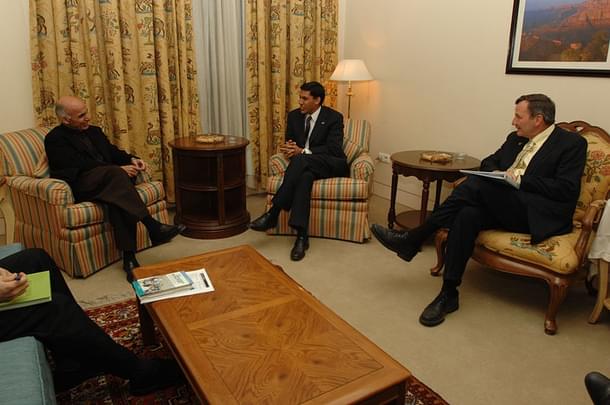
So timid has Indian diplomacy been that Delhi was excluded from the International Conference on Afghanistan, held in Istanbul in January 2010, largely due to Pakistani pressure. Last year, Delhi’s outcry at the preposterous attempt by Washington to distinguish between a “good Taliban” and a “bad Taliban” was also ignored. Despite vociferously denouncing the withdrawal of US troops, Delhi remained predictably yet frustratingly quiet during the negotiations between Afghanistan and the United States over the Bilateral Security Agreement in 2013 and early 2014. If anything, India’s policy towards Afghanistan since the US invasion can be best described as masterly inactivity.
To be fair, Raisina Hill has not been entirely inert: India has extended over $2 billion in aid to Afghanistan, the most it has ever extended to any country. India is the fifth largest bilateral donor to Afghanistan, after the United States, the United Kingdom, Japan, and Germany, though Islamabad remains Kabul’s largest trading partner. Besides the much-publicised Delaram-Zaranj highway, India has also built power lines from Uzbekistan to Kabul, constructed the Salma Dam for hydropower in the Herat province, invested in the mining sector at Hajigak (although work has progressed so slowly that Kabul has threatened to take the contract away from the Steel Authority of India), and provided support in education, health, and telecommunications. India opened up four consulates in Herat, Jalalabad, Kandahar, and Mazar-e-Sharif, and in 2007, also pushed for Afghanistan’s entry into the South Asian Association for Regional Cooperation (SAARC) to better integrate it into the region’s economic networks.
Howbeit, India would do well to look to its own history—if it ever opened it archives—to understand that developmental aid would never mean the same as military assistance. The United States and Japan were the largest sources of developmental aid to India since independence and yet it was the Soviet Union that won the affection of the Indians with their MiG fighter jets and Uralvagonzavod tanks.
India’s military aid to Afghanistan is not quite nil: Delhi trained 576 Afghan troops in 2012 and that number was increased to 1,000 in 2013; over 650 officers and special forces commandos have also received training in India. According to Indian officials, there are also some 500 Indian paramilitary forces deployed in Afghanistan to guard Indian assets as they develop Afghan infrastructure. Finally, in May 2014, India worked out a deal with Russia whereby Delhi would pay Moscow to manufacture and deliver the weapons to Kabul. Though the specifics of this deal are unknown, brand new weapons would cost more and cut into the volume of armaments Afghanistan is looking for. India would also pay to repair old equipment the Soviets had left behind in 1989.
This is not enough for Kabul, which has been blunt about what they expect from India: second-hand weapons such as MiG-21 fighter jets, T-72 tanks, Bofors howitzers, AN-32 transport aircraft, MI-17 helicopters, trucks, bridge-laying equipment, radios, radars, other equipment critical to command and control, and significantly more military trainers. India’s excuses so far have been baffling, from claiming that India does not have surplus weapons and Pakistani refusal to grant overflight permission to requiring Russian permission to manufacture weapons for export under license. Admittedly with the benefit of hindsight, it is nonetheless unclear why Delhi could not anticipate Kabul’s requests and work towards resolving these logjams once it received the first requests from Washington and Kabul in 2006.
Seeing India’s hesitation, Afghanistan has reached out to other regional powers such as China and Russia and has been less prickly towards Pakistan, from whom it had once rejected any military aid, even training. For Kabul, Delhi was the ideal partner as it provided aid with no strings attached, given the considerable overlap of interests between the two countries.
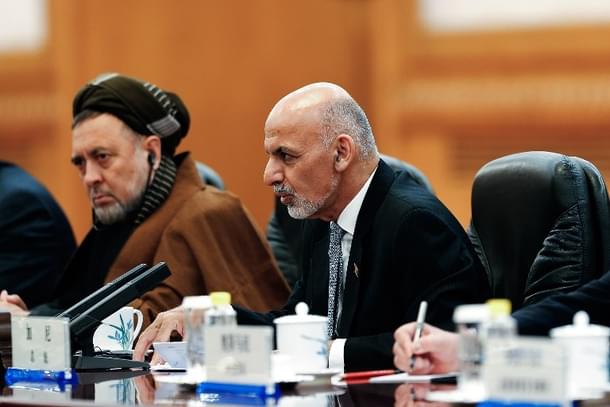
India itself invited China, Iran and Japan to find ways of providing for Afghanistan’s security. As most realists would point out, this was a grave mistake by the Indian government—one never offers other governments an opportunity to enter one’s own backyard, especially when one of them harbours hostile intentions and has been known to support a rival neighbour.
The real reasons for India’s vacillating Afghanistan policy are twofold. The first is that Delhi continued to subscribe to the foolish policy of placating Islamabad at all costs lest the latter escalate the situation in Kashmir and elsewhere. Over the last decade, India has approached Pakistan with a soft touch because of domestic vote bank politics and/or a mental paralysis that prioritizes looking noble and restrained over achieving results. While there was no lessening of support for terrorist activity against India from Islamabad, Delhi genuflected to the half-baked logic of brotherhood and Pakistan as a co-victim of terror. As one analyst argued, India already deploys almost 10,000 troops abroad under the UN flag; it really would not have been that difficult or alien an experience for India to put boots on the ground in Afghanistan if it so decided.
The second reason for India’s inertia is that its ruling political party was too inward-looking and occupied with domestic rivalries to formulate an effective national policy. Foreign policy was federalized, with Sri Lanka being the purview of Tamil Nadu, Bangladesh falling to West Bengal, and Pakistan coming under the jurisdiction of Kashmir and its chapter in Delhi. There was no foreign policy community in the country that could grill the government as citizens became withdrawn from governance with scam after scam rocking the country and institutions crumbling one after the other.
In April and May 2014, both India and Afghanistan went to the polls. In India, the Bharatiya Janata Party won in a landslide, the first time any party captured more than 50% of the seats in the Lok Sabha in 30 years. Even before Narendra Modi took his oath of office, he received two calls from Karzai. The appointment of Ajit Doval as National Security Advisor gave hope to the outgoing Afghan president that India may at last step up to its regional responsibilities.
In Kabul, Ghani took office; unlike his challenger in the polls, Abdullah Abdullah, Ghani had no ties to India. He had not fought alongside Ahmad Shah Masood against the Taliban. Ghani is an academic and a technocrat, educated at the American University of Beirut and Columbia University before teaching at Berkeley and Johns Hopkins and joining the World Bank. While Karzai’s relations with Pakistan were as toxic as his relations with India were good, Ghani comes to the table with a blank slate and is willing to work with Islamabad to reduce terrorism in his country. Now, India fears that this may increase Pakistan’s influence in Kabul yet again.
Ghani is by no means anti-India. However, having watched the South Asian giant vacillate for years, he is following the prudent path by dealing with those ready to do so. Delhi fears that Ghani might overcompensate for his predecessor’s brusqueness with Pakistan and cooperate with them to reduce India’s footprint in Afghanistan in exchange for reducing support to the Taliban.
The pity of it all is that Delhi remained aloof while it had Afghanistan trying to woo it and is now realising its folly, albeit under a different government, when Kabul has turned away to other partners. In many ways, Afghanistan is a litmus test for Delhi’s ascendance as a regional power. One of the many lessons a regional power must understand is that soft power, while useful, is meaningless without hard power.
For a decade, Delhi proudly recalled that the most popular TV serial in Afghanistan was an Indian soap opera, Kyun Ki Saas Bhi Kabhi Bahu Thi, as proof of the superiority of its soft power over US military force. Yet Kabul burned, and as they used to say back home, dum Romae consulitur, Saguntum expugnatur—while Rome deliberated, Saguntum was captured.
Jaideep A. Prabhu is a specialist in foreign and nuclear policy; he also pokes his nose in energy and defence related matters.





